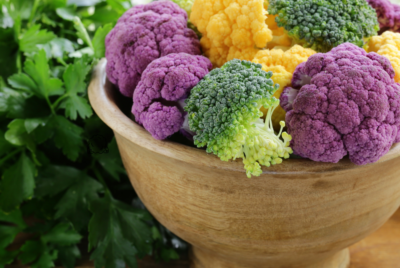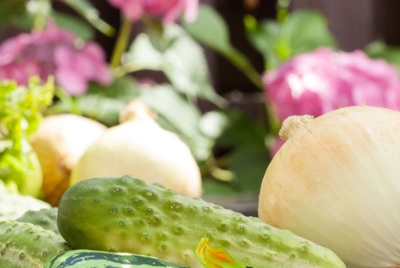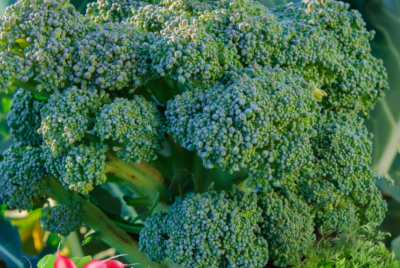Companion Planting Blueberries
10 Easy Steps For Successful Companion Planting With Blueberries
Just like SUVs dominate the American landscape, successful companion planting with blueberries can revolutionize your gardening experience. By following these ten easy steps, you will be on your way to creating a thriving blueberry garden that benefits not only your plants but also the environment. From deterring pests to enhancing flavors, incorporating companion plants with blueberries can make a significant difference in your harvest. So, let’s investigate these steps and watch your blueberries thrive with their plant friends!
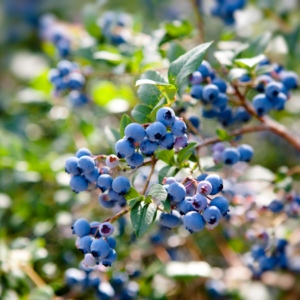
Key Takeaways:
- Choose the right companions: Select plants that have similar soil and sun requirements as blueberries, such as azaleas, rhododendrons, and ferns.
- Provide proper spacing: Make sure to allow enough space between blueberry bushes and companion plants to prevent overcrowding and competition for nutrients.
- Consider pollination: Plant flowers that attract pollinators near blueberries to ensure proper pollination and fruit production.
- Use companion plants for pest control: Some plants, like marigolds and chives, can help repel pests that may damage blueberry bushes.
- Avoid planting aggressive species: Be cautious of planting aggressive or invasive species as companions for blueberries, as they can overwhelm and outcompete the blueberry bushes.
Getting Started with Companion Planting
Understanding Your Blueberry Plants
Plants like blueberries thrive in acidic soil with good drainage and plenty of sunlight. They are shallow-rooted and require consistent moisture to produce sweet, juicy berries. Understanding the specific needs of your blueberry plants is crucial for successful companion planting.
Selecting the Right Companion Plants
Getting started with companion planting means choosing plants that will benefit your blueberries. Look for companions that will help attract pollinators, repel pests, or provide ground cover to control weeds. It’s crucial to avoid plants that prefer alkaline soil or compete for the same nutrients as blueberries.
When selecting companion plants, consider options like strawberries, rhododendrons, or azaleas that also prefer acidic soil. These plants can enhance the growth of blueberries while adding beauty to your garden.
With the right companion plants by your blueberries’ side, you can create a thriving ecosystem that promotes growth and helps keep pests at bay. Happy planting!
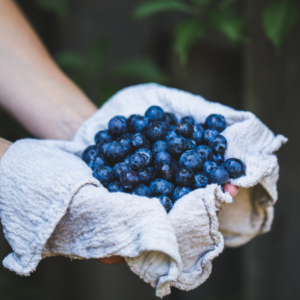
Step-By-Step Companion Planting
| Preparing the Soil for Success | Planting Your Blueberry Companions |
| … | … |
Preparing the Soil for Success
Any successful companion planting with blueberries starts with preparing the soil properly. Blueberries thrive in acidic soil with a pH between 4.5 and 5.5. Ensure the area is well-drained and rich in organic matter like compost or peat moss. Mixing in sulfur can help lower the pH if needed.
Planting Your Blueberry Companions
Soil is crucial for the successful growth of blueberry companions. Choose plants that prefer similar acidic soil conditions, like azaleas, rhododendrons, or ferns. Planting companion plants around the blueberries can help suppress weeds, retain moisture, and provide habitat for beneficial insects.
Planting your blueberry companions strategically can also improve pollination and yield for your blueberry bushes. Be mindful of the spacing between plants to avoid overcrowding, which can lead to competition for resources. Select companion plants that will not only benefit the blueberries but also enhance the overall aesthetics of your garden.

Companion Planting Do’s and Don’ts
Ideal Plant Partners for Blueberries
Unlike some plants, blueberries thrive when planted with certain companion plants that can help improve their growth and flavor. Any gardener looking to maximize their blueberry harvest should consider planting companion plants like azaleas, rhododendrons, and heather near their blueberry bushes. These plants not only complement the soil pH requirements of blueberries but also attract pollinators that can benefit the entire garden.
Plants to Avoid Near Your Blueberry Bushes
On the flip side, there are certain plants that you should avoid planting near your blueberry bushes as they can negatively impact their growth and overall health. One of the plants you should steer clear of is black walnut trees. These trees release toxins that can inhibit the growth of blueberries and other plants around them.
For instance, other plants to avoid near your blueberry bushes include potatoes and tomatoes. These plants are susceptible to similar diseases as blueberries, such as blight, which can easily spread among them. Therefore, it’s best to keep these plants at a distance to prevent any potential harm to your blueberry bushes.

Maintaining Your Companion Planting Garden
Watering and Feeding Basics
For a successful companion planting garden with blueberries, proper watering and feeding are necessary. Blueberries need consistently moist soil, especially during the growing season. Be sure to water deeply, allowing the roots to absorb the moisture. Additionally, fertilize your plants with a acidic fertilizer designed for blueberries to ensure they receive the necessary nutrients for healthy growth.
Pruning and Harvesting Tips
For best results, prune your blueberry bushes in late winter or early spring to encourage new growth and maintain a healthy shape. When harvesting blueberries, remember to pick ripe berries gently to avoid damaging the plant. Regular pruning promotes air circulation and reduces the risk of disease. Knowing when and how to prune your blueberry bushes will help them thrive and produce abundant fruit.

- Proper watering and feeding are crucial for healthy blueberry plants.
- Regular pruning keeps the bushes productive and disease-free.
- Harvesting ripe berries gently ensures a bountiful yield for years to come.
Basics: Maintaining your companion planting garden with blueberries involves consistent care and attention to detail. By following these watering and feeding basics, as well as pruning and harvesting tips, you can enjoy a fruitful harvest and a thriving garden all season long!
To wrap up
The 10 easy steps provided in this guide offer a great way to successfully incorporate companion planting with blueberries in your garden. By following these steps, you can enhance the growth and flavor of your blueberries while also promoting a healthier garden ecosystem. For a more in-depth look at companion plants that work well with blueberries, check out the Full Guide on Blueberry Companion Plants. Happy planting!

FAQ
Q: Why is companion planting important for blueberries?
A: Companion planting is important for blueberries as it can help improve pollination, prevent pests, and enhance overall growth and health of the plants.
Q: What are some good companion plants for blueberries?
A: Some good companion plants for blueberries include strawberries, chives, dill, and marigolds.
Q: How can companion planting benefit blueberries?
A: Companion planting can benefit blueberries by attracting pollinators, repelling pests, providing shade, and improving soil quality.
Q: Are there any plants that should be avoided when companion planting with blueberries?
A: Yes, plants that prefer acidic soil or have competing root systems should be avoided when companion planting with blueberries.
Q: How can I successfully implement companion planting with blueberries?
A: To successfully implement companion planting with blueberries, make sure to research compatible plants, provide adequate spacing, and monitor the health of your blueberry plants regularly.

Companion Planting Blackberries
Black Eyed Susan Companion Planting
Pink Muhle Grass Companion Plants
Pink Muhle Grass – How to grow and care for it


